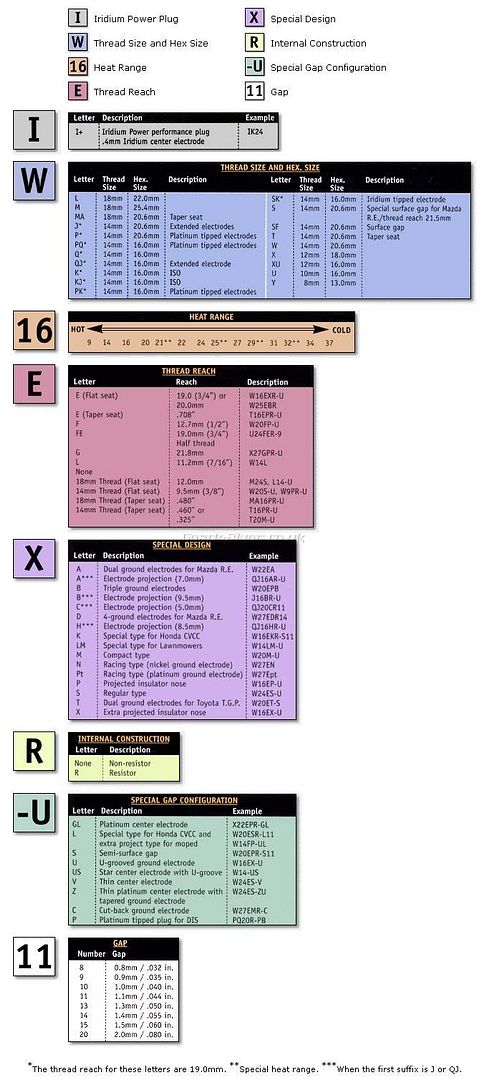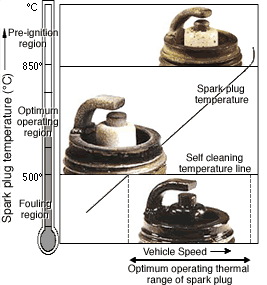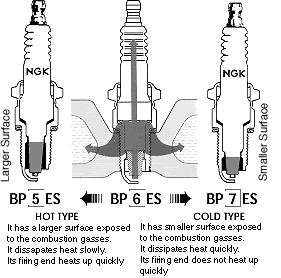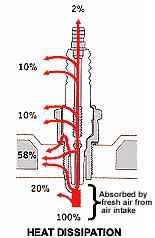Spark plugs are fun! Since we all run Toyota engines & *most* people are running Denso ignition systems… That pretty well limits us to two brands of plugs that will give consistently good performance over their life. NGK & Denso, so that’s what we’re concentrating on! (Besides. JDM owns anyways, we all know that!) *note* All plugs listed will be currently available now. That means old plugs with new names, replaced plugs. Who cares. This is 2/2006.
Stock 1uz-fe plugs: NGK Denso
Normal/OEM Iridium: NA IFR6T-11
Premium Iridium: BKR6EIX-11 IK20
Original OEM (Platinum): BKR6EP-11 PK20R11
Premium Platinum: BKR6EGP NA
Standard: BKR6ES-11 NA
Standard, Grooved Strap: BKR6E-11 K20R-U11
Blah blah blah .
Iridiums last 60,000-80,000+ miles on “unmodified” engines. Plats, Toyota specifies for 60,000 miles. Copper, 30,000-60,000 miles. (A year under boost) Then again. Most standard plugs cost $1.50-$2usd per plug… You do the math. Blah, blah blah .
Quick, random good stuff to know:
* You can not use platinum plugs with n2o. NGK.com (Not NGK affiliated) – “There have been instances where the platinum tip has lost its bond to either the center or ground electrode when they were used in a motor with nitrous.”
* Do not use platinum plugs under boost – never, never, never!
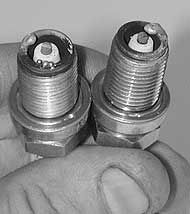
* Only use copper, or Iridium plugs under boost!
* Single electrodes guys. Single electrodes!
* It is advisable to run 2 heat ranges colder when going from NA to boost, plus 1 range colder per bar of boost. (Or one range per 70-100bhp)
* Advancing ignition timing by 10° causes tip temperature to increase by approximately. 70°-100° C.
la-la-la
|
Now, to understand the most critical part of buying a spark plug; It’s heat range! Quote:
Quote:
|
|
Stock plugs for various FI’ed import vehicles:
Toyota Supra – 2jz-gte Same as 1uz-fe. NGK heat range 6, .044 gap Supra – 7m-gte (BKR), NGK heat range 6, .032 gap MR2 – 4a-gze (BCR) NGK heat range 6, .044 gap MR2 – 3s-gte (BKR) NGK heat range 6, .032 gap Mazda MX6 GT – 2.2L Turbo NGK heat range 6, .044 gap Nissan 300ZX – VG30DETT NGK heat range 5, .044 gap Audi/VW Virtually everything FI’ed uses the same plug as a 1uz-fe. etc. on down the line. The moral, If it’s boosted from the factory & not a rotary, it most likely runs an NGK 6 heat range!Now for anyone doing some mild-medium FI, or n2o. The obvious choice would be the BKR8E / BKR8ES. The problem, is that while NGK still makes BKR8xx’s. They don’t make/distribute them anymore! The coldest they go in the BKR seires is the 7. On the other side… The BCR’s WILL fit, and DO go to 8. There in lies the question… Swap to a colder plug with a different end, or stick with the BKR’s that don’t go as cold. Here’s your answer! Use the BKR8E! NGK Part no. 6097. It’s the plug of choice for: The modified 3s-gte crowd, nearly all the boosted/modified Supra owners (Even all NA-T’s), 300zx’s Audi/VW people. Can you use Iridium plugs under boost? Yes! Despite my inital thoughts on the matter; research has shown they work very, very well! Like N/A, nothing currently works better. If you can afford them, NGK BKR7EIX no.6988 / Denso IK22. Lastly, |
|
NGK plug reference:
 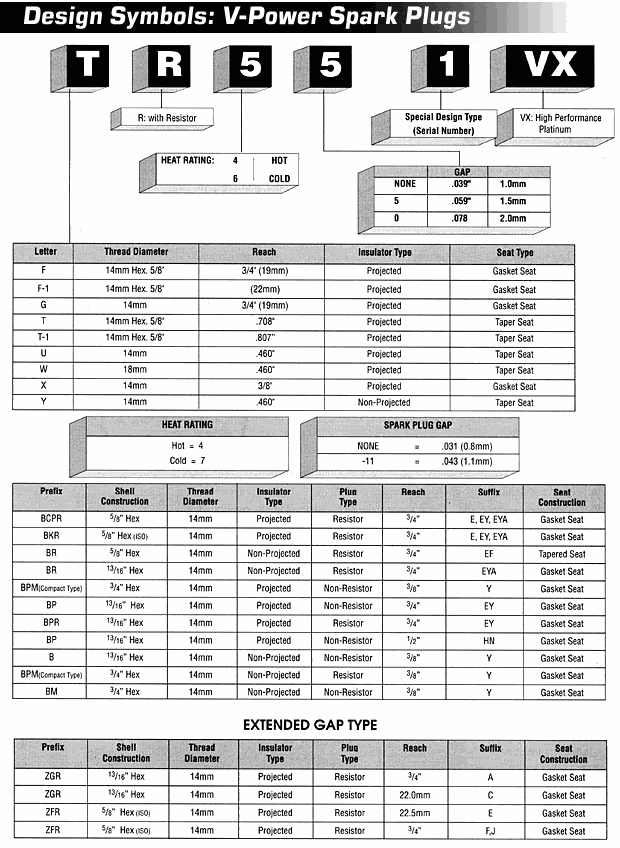  |
Denso plug reference:
